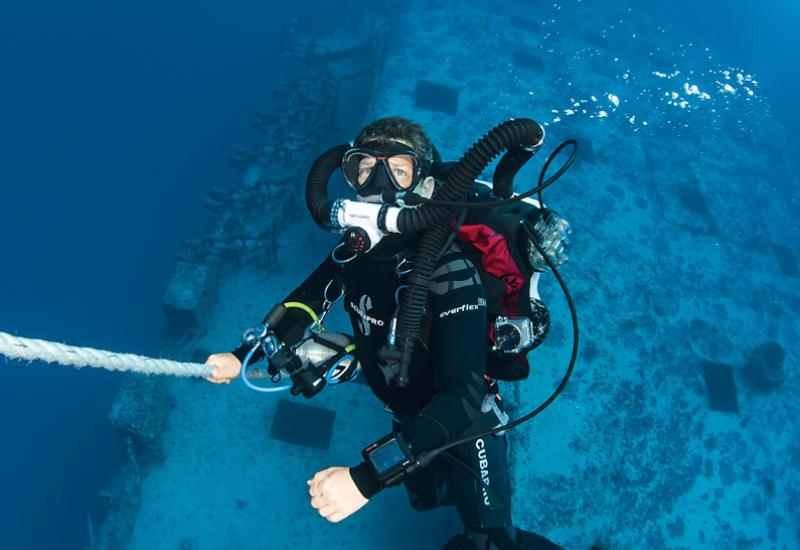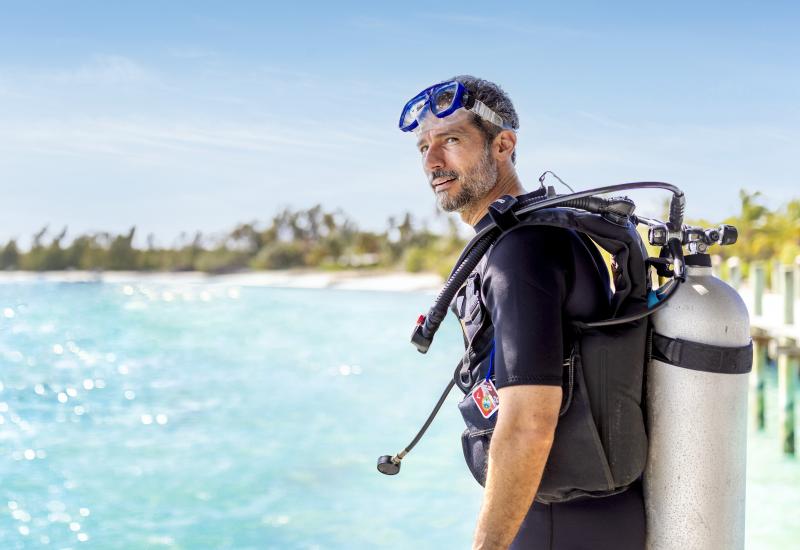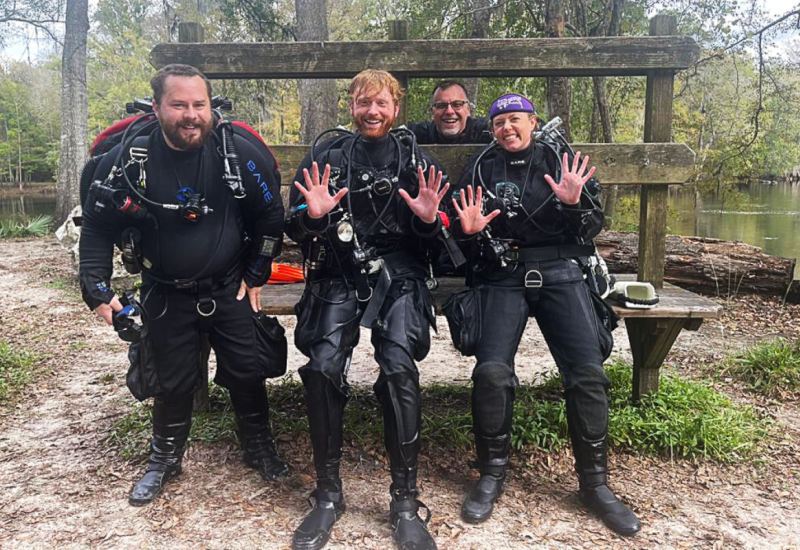How To Dive at Night Safely

Night Dive with Sharks
Trust us: There are no monsters hiding under the coral heads.
Shutterstock
Are you afraid of the dark? Many divers are timid about giant striding into a black sea. Follow our tips to just sit back and enjoy the show.
1. START AT DUSK:
You'll have some daylight to gear up and be underwater as darkness sets in. You'll also have the chance to see the reef transition from the day shift to the night crew.
2. THINK AHEAD:
Review hand signals before getting in the water. (You can shine the light on your hands so your buddy can see what you're communicating, or make signals using your light.) Signal "OK," "Yes" and "No" by moving your light in a circle, up and down, and side to side.
3. USE TWO LIGHTS:
You'll need a primary and a backup light. The primary should be larger and brighter. Never shine your light in anyone's face – you'll ruin his night vision.
4. KNOW THE DRILL:
If your primary light fails, end the dive. If you become separated from your buddy, get vertical, and shine your light outward while turning a full circle. If you surface far from the boat, point your light at the boat until you get the crew's attention, then shine it down on your head so the crew can see you clearly.
5. FIND YOUR WAY HOME:
The boat or dock should be marked with a flashing strobe to help you navigate back to your starting point. If your operator has other methods or rules, be sure to follow them.

ShutterstockTrust us: There are no monsters hiding under the coral heads.
Are you afraid of the dark? Many divers are timid about giant striding into a black sea. Follow our tips to just sit back and enjoy the show.
1. START AT DUSK:
You'll have some daylight to gear up and be underwater as darkness sets in. You'll also have the chance to see the reef transition from the day shift to the night crew.
2. THINK AHEAD:
Review hand signals before getting in the water. (You can shine the light on your hands so your buddy can see what you're communicating, or make signals using your light.) Signal "OK," "Yes" and "No" by moving your light in a circle, up and down, and side to side.
3. USE TWO LIGHTS:
You'll need a primary and a backup light. The primary should be larger and brighter. Never shine your light in anyone's face – you'll ruin his night vision.
4. KNOW THE DRILL:
If your primary light fails, end the dive. If you become separated from your buddy, get vertical, and shine your light outward while turning a full circle. If you surface far from the boat, point your light at the boat until you get the crew's attention, then shine it down on your head so the crew can see you clearly.
5. FIND YOUR WAY HOME:
The boat or dock should be marked with a flashing strobe to help you navigate back to your starting point. If your operator has other methods or rules, be sure to follow them.










